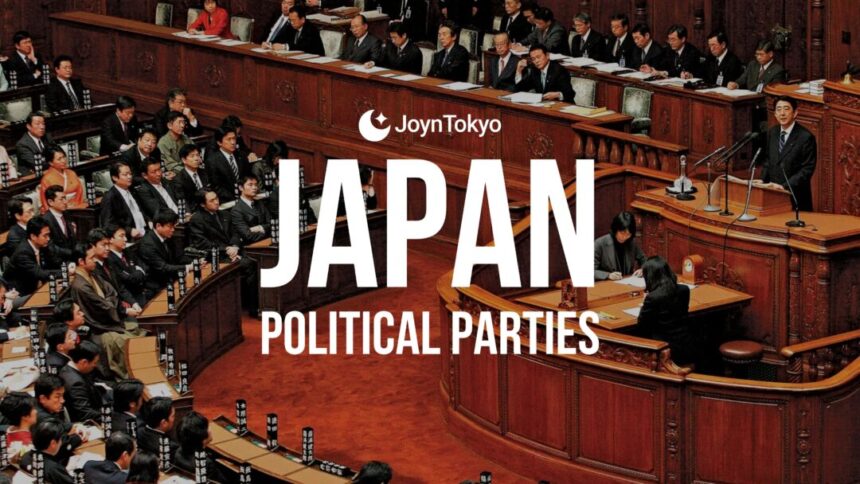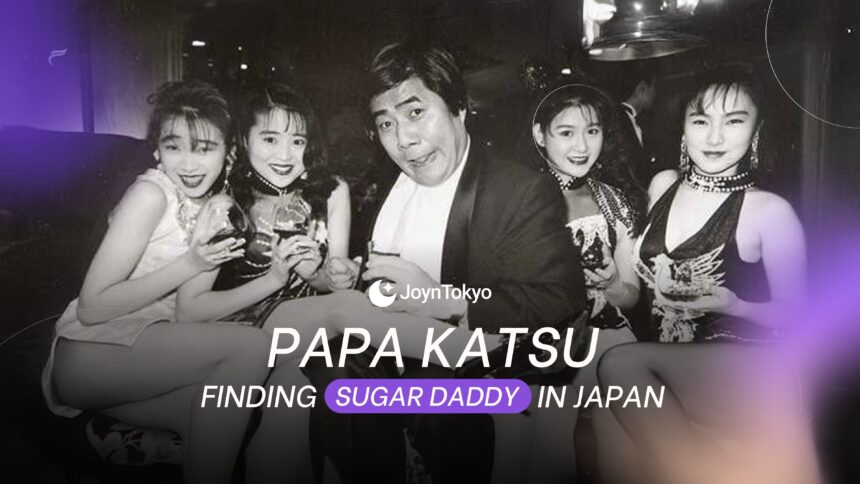On September 7, 2025, Prime Minister of Japan Shigeru Ishiba announced that he would resign, following a number of bruising electoral defeats. These culminated in the July 2025 elections that saw his Liberal Democratic Party (LDP) and their coalition partner Komeito losing their majorities in both houses (the lower House of Representatives and the higher House of Councillors) in the Diet (the Japanese parliament).
So now there will be an internal election in the LDP to decide the new leader of their party and, therefore, Prime Minister. With the exception of Shinzo Abe, who served from 2012 to 2020, making him the longest-serving Prime Minister in Japanese history, Japan has a long history of changing leaders in relatively rapid succession (supposedly a headache for allies).
But who are the main political parties in Japan? Which parties are the most significant today? We’ll go through the top ten most prominent parties in the Diet to give you a quick rundown.
Ten Most Represented Parties in the Diet
Unlike the US, where two parties rule the roost of political discourse, while independent and minor parties have little to no say, Japan has — like many European nations — a very politically pluralistic parliament. At least, that is the case in numbers of parties, though the rule of Japan has, in many ways, been that of one party almost uninterrupted since the end of the Second World War. So, let’s start with the most significant modern Japanese political party.
Liberal Democratic Party
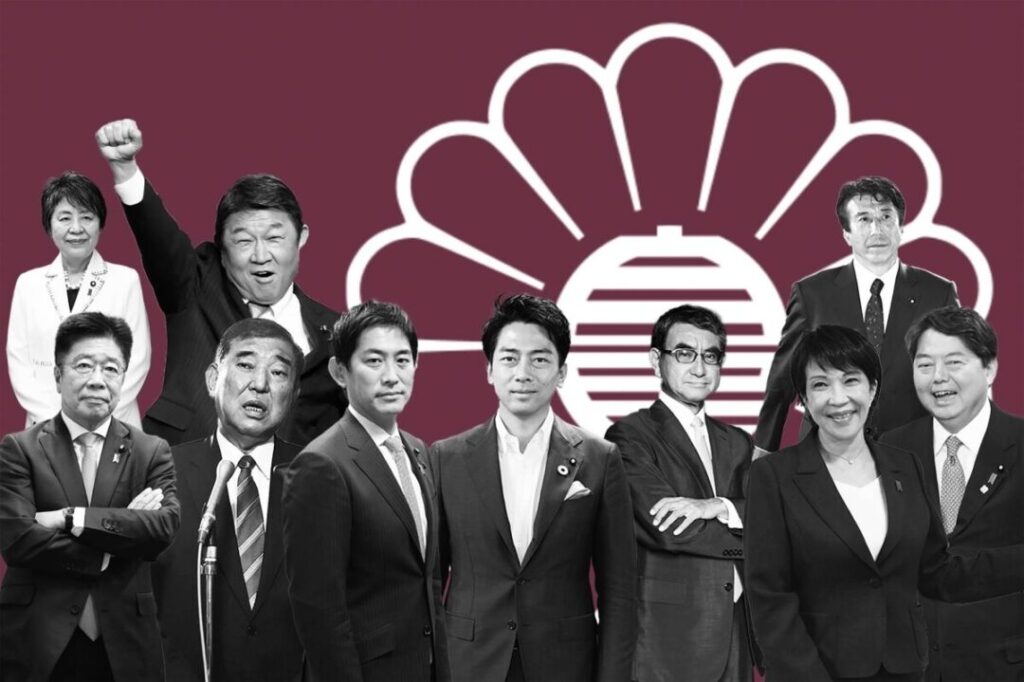
Leader
Shigeru Ishiba (as of September 2025)
History
Founded in 1955 through the merger of the Liberal Party and the Japan Democratic Party, the LDP has been the dominant power in politics since the restoration of Japanese democracy following the end of US occupation, known by some as the “1955 system”.
American readers may be surprised to learn that the “Liberal Democratic Party” is a center-right conservative party. It has fostered strong links between Japanese businesses and the government, and values the strong connections between the US and Japan, both in terms of its economy and security. This means it can take positions that are somewhat unpopular, such as insisting on the need for a US military base in Okinawa, despite protests of the locals.
Beliefs
Though being consistently right-of-center, the LDP is something of a “catch-all” party: popular without being populist, its broad appeal is part of the reason it has been so electorally successful for decades. It is staunchly pro-capitalist, but is not opposed to market intervention and mixed-market solutions when the free market has failed or is clearly not a solution to a given problem.
Point of Interest
The LDP has only been out of power for six years in the last 70, between 1993 and 1996, and again between 2009 and 2012.
Constitutional Party of Japan
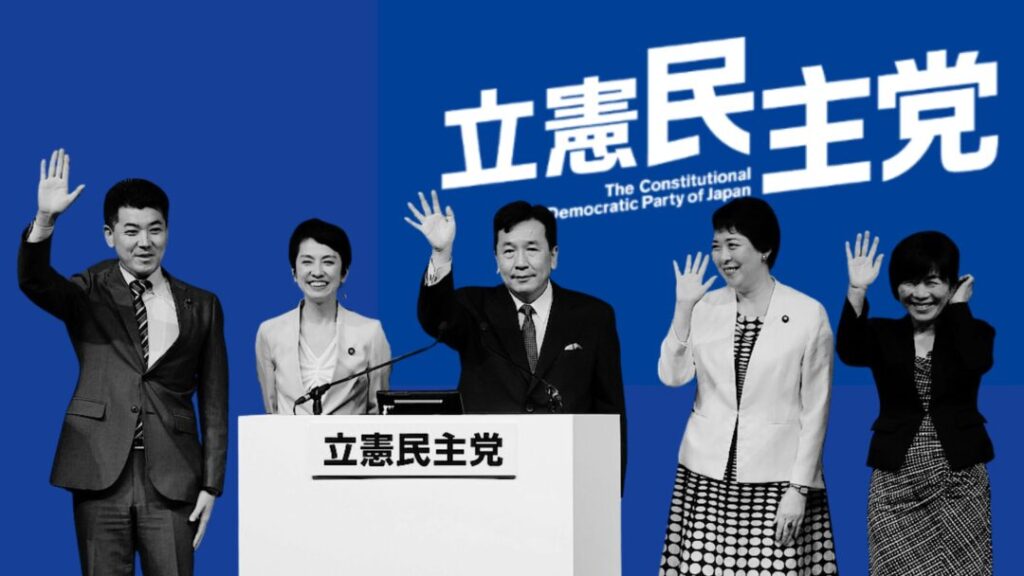
Leader
Yoshihiko Noda
History
The second largest party in the Diet, the Constitutional Party of Japan (CDP) was formed from the ashes of the former Democratic Party of Japan (DPJ) which fractured in the years following its brief 2009-2012 governance of Japan.
It was initially formed in 2017, and then “rebooted” in a sense in 2020, when a large number of the Democratic Party for the People (another splinter group from the fallen DPJ) and significant numbers of the Social Democratic Party joined the CDP. It enjoyed significant electoral success in 2024, depriving the LDP of its majority in the House of Representatives.
Beliefs
A left-of-center party, it is considered to be both liberal and, to a degree, populist. It supports LGBTQ+ rights, including marriage equality, increased use of renewable energy, and supports pacifism, most notably being dedicated to the preservation of Article 9 of the constitution, which forbids Japan from having a standing military.
Point of Interest
Despite being an offshoot of the left of the former DPJ, the CDP has since absorbed so many parliamentarians and supporters who went to other parties that it can be reasonably described as the successor to the DPJ.
Japan Innovation Party

Leader
Hirofumi Yoshimura
History
Formed in 2015, the Japan Innovation Party (JIP) was created after founders Toru Hashimoto and Osaka governor Ichiro Matsui, both members of the Restoration Party, left in protest after the party’s leader endorsed a local candidate also endorsed by the DPJ and the Japanese Communist Party (JCP).
Initially focused on Osaka, its relative popularity among local constituents convinced the party to become more national in scope, and it gave itself its current name in 2016.
Beliefs
Often thought of as a right-wing populist party, it has a mixture of policies that could be considered variously right-wing and left wing. For example, one of its promises to the electorate is a ¥60,000 monthly universal basic income, which would please left-wing populists. However, it also supports deregulation of finance and other major industries, a popular policy among neoliberals.
Point of Interest
Originating in Osaka, one policy which is neither left nor right, but instead of personal interest to many members, is to officially designate Osaka as Japan’s “vice-capital.”
Democratic Party for the People
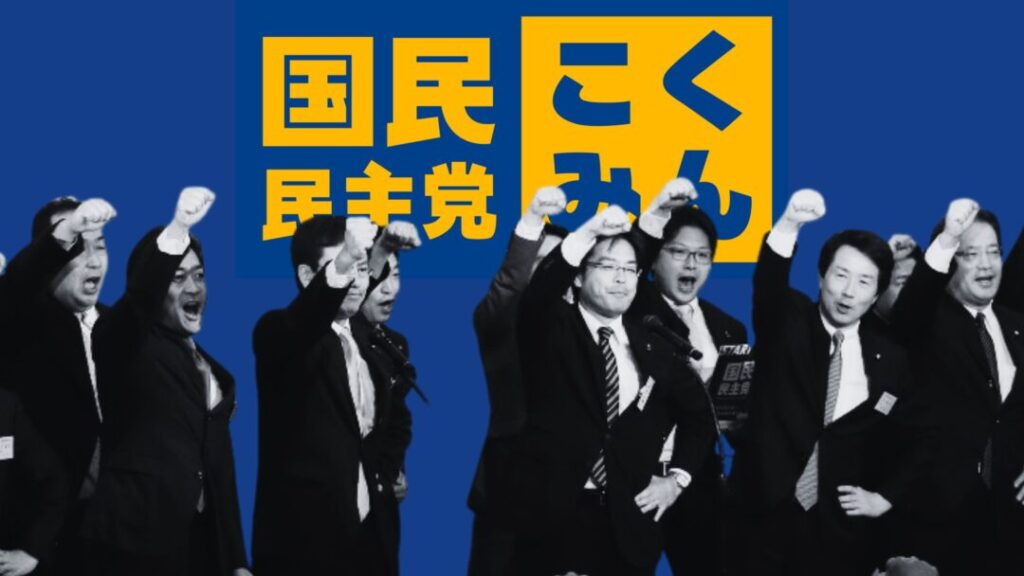
Leader
Yuichiro Tamaki
History
As mentioned above, the Democratic Party for the People (DPP) was formed in the shadows of the end of the DPJ, when remaining remnants of the party merged with Party of Hope, another offshoot, in 2018. Despite being relatively smaller (especially after the aforementioned defection of party members to the CDP) it has been remarkably successful electorally, and in 2025 leap-frogged Komeito, the junior partner in the ruling coalition, to become the fourth largest party in the Diet.
Beliefs
Describing itself as a “reformist-centrist party,” some have thought of the DPP as a conservative populist party. However, the party believes that its members are made up of a mixture of conservatives and liberals.
Point of Interest
According to its belief in constitutional reform, the DPP has sworn not to join the LDP or Komeito in government, but instead will support any party — government or opposition — on a policy-by-policy basis.
Komeito
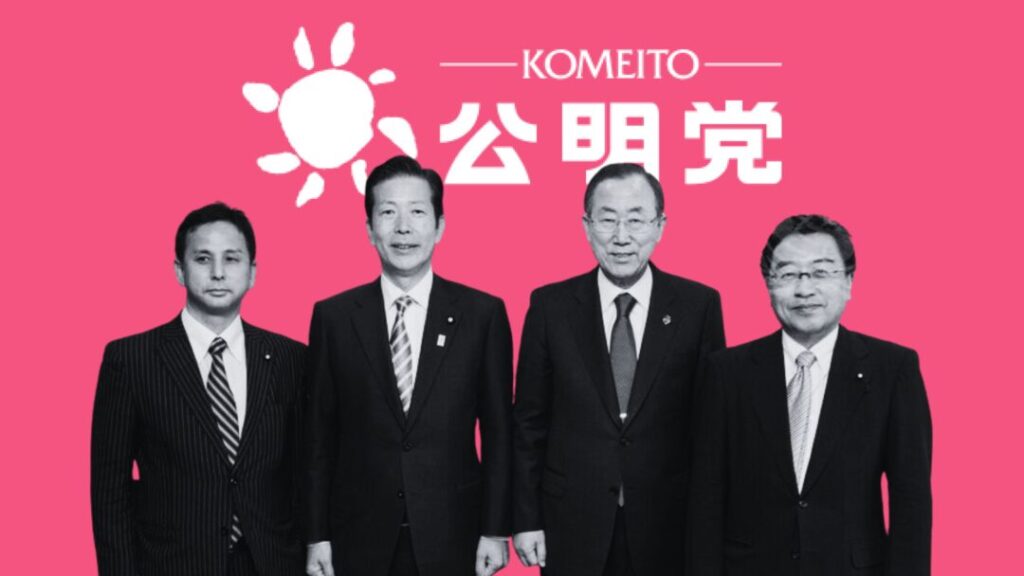
Leader
Tetsuo Saito
History
Founded in 1964 by the head of Soka Gakkai, a Buddhist sect, Komeito puts an emphasis on Buddhist teachings and morality in politics. Its early years were fraught with scandal, with members being found guilty of electoral fraud, and coming in for criticism for advocating for policies that would violate the separation of church and state.
However, in the late 1990s, the party moderated, and in 1999 joined the LDP as its junior coalition partner in government, a position it has held since (with the exception of 2009-2012, when the DPJ was the ruling party).
Beliefs
Though it describes itself as the party of “humanist socialism,” Komeito is widely seen as a right-wing party, in part thanks to its ongoing support of the center-right LDP, and also due to its ongoing desire to revise Article 9 in order to allow Japan to aid allies abroad if requested. It also supports a smaller state and increased roles for private organizations in public life. However, it is also broadly supportive of LGBTQ+ rights, including supporting marriage equality.
Point of Interest
Despite having officially split from Soka Gakkai, the party and the religion still work together, and are considered to be the most successful religious political party in modern Japanese history.
Sanseito
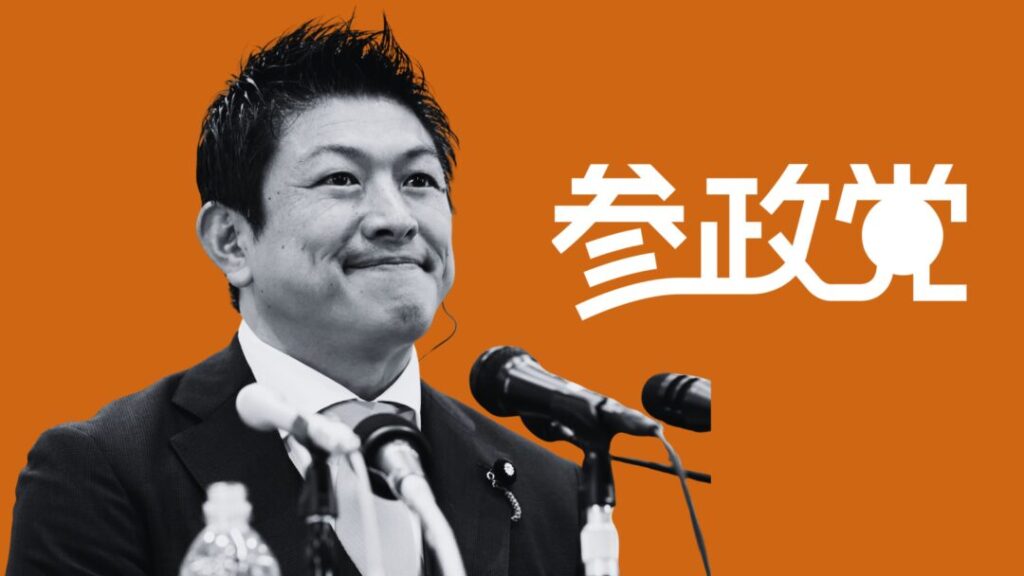
Leader
Sohei Kamiya
History
A relatively new party, Sanseito has nevertheless seen electoral gains in the five years since its 2020 origins. Known for its far-right stances, it has been controversial since the beginning, with senior figures continually promoting Covid-19 misinformation, including calling vaccines a “weapon of murder.”
Beliefs
Very far on the right-end of the political spectrum, Sanseito opposes LGBTQ+ rights, and has called for the repeal of legislation to increase understanding of LGBTQ+ people among the population. It is also anti-immigration, and wants not to revise the Japanese constitution, but replace it with a new one that dramatically restricts human rights.
Point of Interest
The party’s founder and leader, Sohei Kamiya, has been condemned for his repeated antisemitic writings and public statements.
Reiwa Shinsengumi

Leader
Takashi Takai
History
Founded in 2019 by actor-turned-politician Taro Yamamoto, Reiwa Shinsengumi (named for the current era of Japan and the elite police force of the late Edo period) is a left-wing populist party that managed to win over two million votes in the 2019 election, mere months after its founding.
Beliefs
Very much on the left side of politics, its policies include raising the minimum wage, as well as increasing taxes on the wealthy. It is very pro-economic intervention, and also supports cancellation of student debt, and the promotion of a Green New Deal.
Point of Interest
Despite earning a million votes personally, Yamamoto did not win a seat as the part prioritized Yasuhiko Funago and Eiko Kimura, both of whom have disabilities. The Diet was subsequently made wheelchair accessible to accommodate their needs.
Japanese Communist Party

Leader
Tomoko Tamura
History
Founded in 1922, the JCP is Japan’s oldest extant political party. It was driven underground for two decades after being outlawed in 1925, before being legalized under US occupation. It has met with various levels of success in the time since, at one point holding 10% of the seats in the Diet, though it has been slowly declining in vote share since the turn of the millennium. Nevertheless, it is often described as the world’s most significant non-governing communist party.
Beliefs
Although founded on Marxist-Leninist principles, today is is considered more moderate, though still decisively on the left of Japanese politics. It supports rebalancing the Japanese economy to serve the interests of the people of Japan, not corporations. This includes policies of increasing corporate taxes and raising the minimum wage.
Point of Interest
Abolition of the monarchy is a long-term goal of the JCP, and its newspaper Akahata (literally “Red Flag”) goes out of its way not to use polite terminology when referring to the Emperor.
Conservative Party of Japan

Leader
Naoki Hyakuta
History
First formed in 2023, the Conservative Party of Japan (CPJ) was created in reaction to the LGBT Understanding Promotion Act, passed in the same year. It is particularly notable for finding support among the “netto uyoku” (ネット右翼, “internet right-wingers”), what westerners might call the “alt-right.”
Beliefs
A reactionary far-right party, it regularly engages in historical revisionism, including denying that Japan committed any war crimes during the Second World War, up to and including denying the Rape of Nanking. It supports revising the constitution to allow a standing, offensive army.
Point of Interest
Vehemently opposed to gender equality, the leader has described his vision of society as one where women cannot attend university, and must be legally mandated to be married before the age of 25.
Social Democratic Party
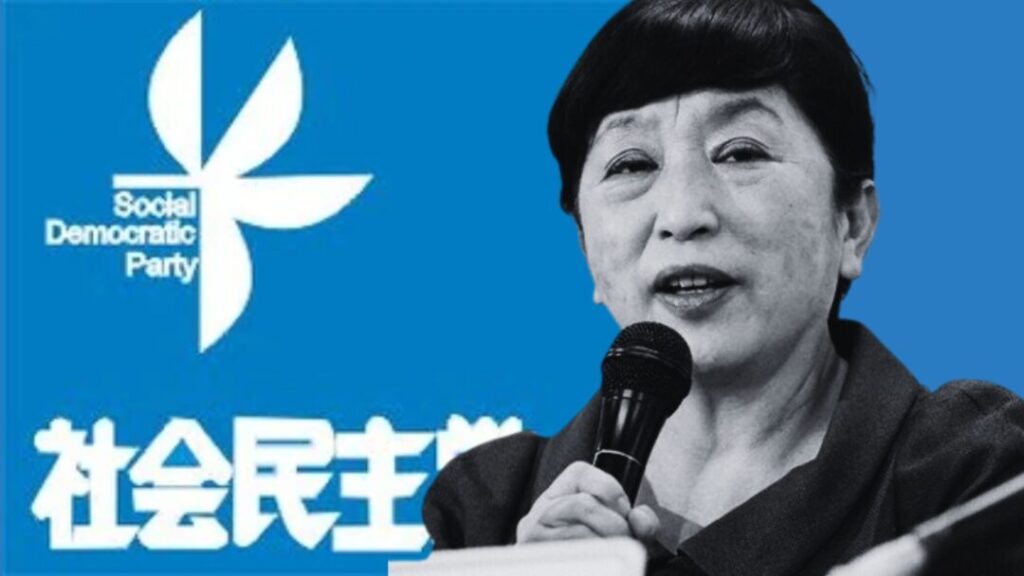
Leader
Mizuho Fukushima
History
The successor to the Japanese Socialist Party, the Social Democratic Party (SDP) is a left-of-center party rebranded and refounded itself in 1996. Formerly the main opposition to the LDP, following the change, many law makers defected to the DPJ. Many members in 2020 also left to join the CDP, but it retains three seats in the Diet.
Beliefs
As a social democratic institution, it is dedicated to pacifism, and in favor of expanded social welfare. It is also pro-LGBTQ+, pro-feminist, and opposed to the death penalty.
Point of Interest
The SDP was a junior partner with the DPJ during its 2009-2012 administration.
While there are a few more smaller parties in the Diet (as well as independents) along with a large number of local parties, these ten should give you some idea of the ideological and political spectrum of Japan’s national politics.

